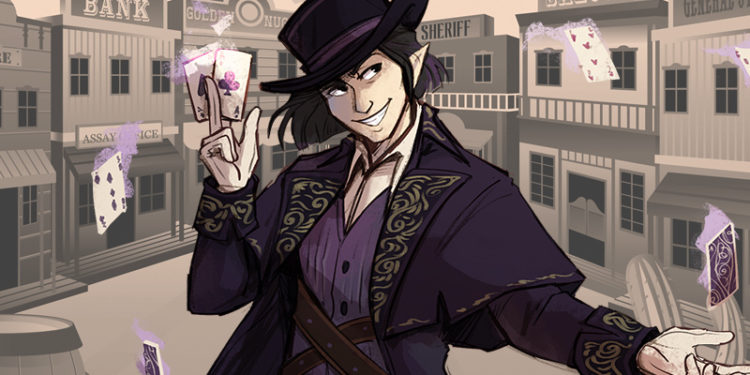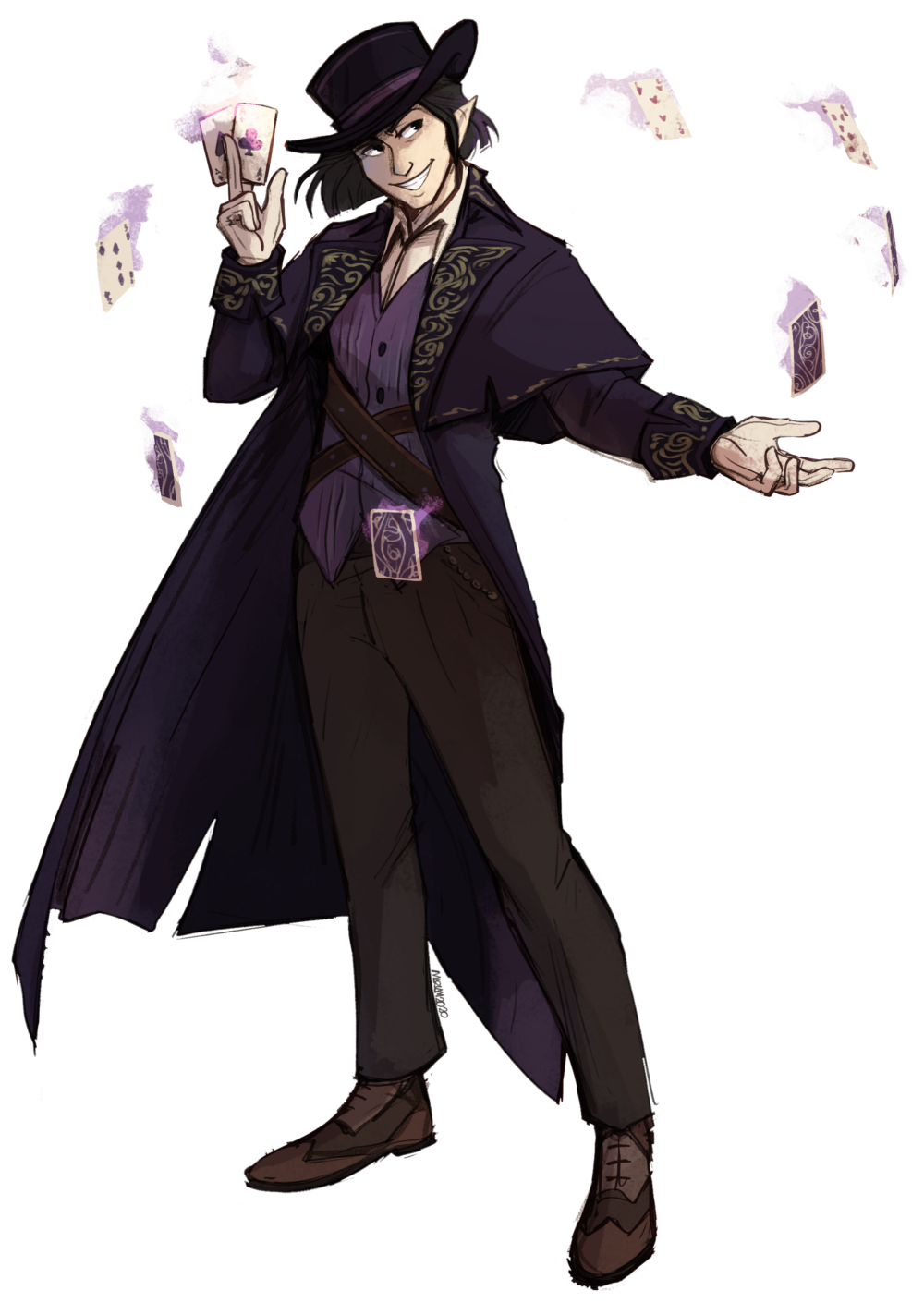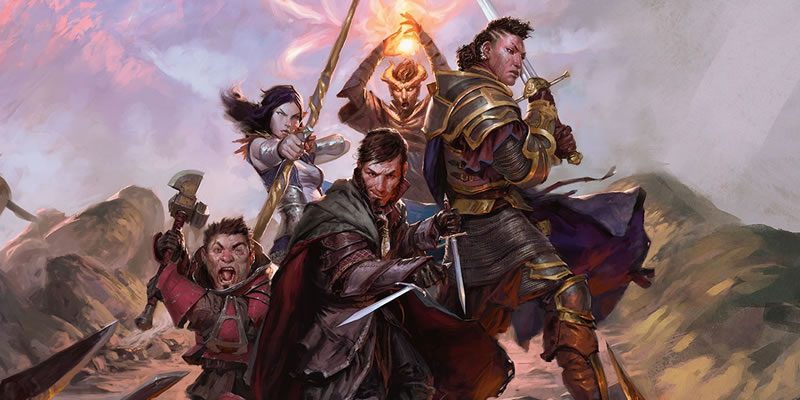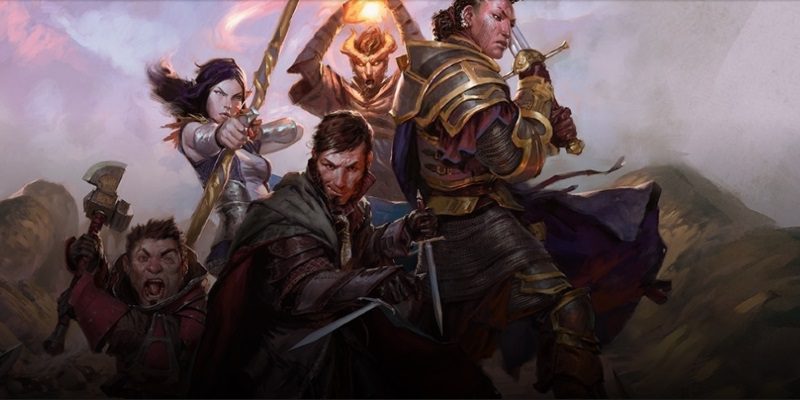Cardslinger – Sorcerous Origin for D&D 5e

This week on the Campaign Trail, I’m sharing a new sorcerous origin that I created for a weird west/fantasy mix campaign I am planning to run later this year. Sorcerers are those rare individuals who are naturally connected to the magical energies found in the universe. They only need to learn to harness their connection to unlock powerful abilities. A sorcerer with this origin uses cards to channel their innate magic and draw on magical energies of the world.
Design Notes:
- I wanted this origin to have a little bit of the feel you get when you roll for wild magic mixed with the thematic match of drawing cards.
- At one point I thought about having cardlingers build a hand of multiple cards, but I wanted mechanics that could work with dice. The Jokers and Lucky Card can still work with rolling a d20, as those can just be tracked on a character sheet.
- For cantrips selected at level 1, I’d choose fire bolt or ray of frost, and shocking grasp for when you are in close combat.
- Most people should be able to access a deck of cards an in-person game. For online games, there are solutions, such as Roll20’s card deck feature. See ‘Using Playing Cards’ below.
Let us know in the comments below what you think of this new option for monks. Detailed feedback is appreciated.
Mixology (Bard) | Wrangler (Fighter) | Pugilist (Monk) | Maverick (Rogue) | Cardslinger (Sorcerer)
At 1st level, a sorcerer gains the Sorcerous Origin feature. Here is a new option for that feature: the Cardslinger.
Cardslinger
By chance, you met an elemental, visited an elemental plane, or were hit by the elemental chaos as it broke through into the world. Your innate magic draws from this connection to earth, flame, sky, and sea. Now, elemental energy courses through you, each element battling to enter the world.
As a Cardslinger, your expertise with playing cards goes beyond sleight of hand tricks and beating fools at the gaming table. Through experience and experimentation, you’ve found that cards allow you to channel the chaotic energies coursing through you. You’ve also discovered that your skill with playing cards is uncanny, allowing you to throw cards with deadly accuracy.
The random act of drawing a card connects you with the forces of chaos, unleashing the extraordinary and unexpected. With each shuffle of your deck, you come closer to understanding your gift and realizing your true potential.
CARDSLINGER Features
| Sorcerer Level | Feature |
|---|---|
| 1st | Magical Cards, Cardsharp |
| 6th | Enhanced Cardslinging |
| 14th | Luck of the Draw |
| 18th | Wild Card |
Magical Cards
When you choose this origin at 1st level, you can empower one standard deck of playing cards which become magical with the following properties:
Spellcasting Focus. You can set your deck of magical cards as your spellcasting focus.
Shuffle. During a long rest, if you spend at least 15 minutes of the rest shuffling your deck of magical cards, any lost or damaged cards are restored. Starting at 10th level, you can shuffle your magical cards during a short or long rest.
Jokers. Before you shuffle your magical cards, remove the two Joker cards from the deck and set them aside. Whenever you draw a card, you can spend one of your remaining Joker cards to draw another card from the deck, using the new card. Once played, a Joker card is consumed by magical energy and can’t be used again until it reappears when you shuffle your magical cards.
Lucky Card. When you shuffle your magical cards, draw a card from the top of the deck. Set this card aside, it is your lucky card, which is active until you shuffle your magical cards again.
Card Magic. When casting a spell attack that inflicts damage to a target you can draw a magical card. When drawn, the card is consumed by magical energy and you can gain one of the following benefits:
- If the drawn card shares the same face value as your Lucky Card (Ace, Two, Jack, etc), the spell deals an extra 2d6 damage. The extra damage increases to 3d6 at 6th level, 4d6 at 14th level, and 5d6 at 18th level. If the spell does ongoing-damage, this benefit only applies to the initial damage from the spell attack.
- If the drawn card shares the same suit value (Club, Diamond, Heart, or Spade) as your Lucky Card, you can change the damage of the spell attack to match the damage of the suit, found in the Damage by Suit table. If you do so, add your Charisma modifier to the spell’s damage.
DAMAGE BY SUIT
| d4 | Suit | Damage Type |
|---|---|---|
| 1 | ♣ Club | Lighting or thunder |
| 2 | ♦ Diamond | Cold |
| 3 | ♥ Heart | Fire |
| 4 | ♠ Spade | Acid |
Cardsharp
Starting at 1st level, you gain proficiency with all gaming sets and expertise with the playing card set. You also have advantage on Sleight of Hand checks made to use a deck of playing cards.
Also, cards are deadly weapons in your hands. You can use playing cards from your magical deck of cards with the following properties:
- Thrown cards are as simple ranged weapons with the finesse, light, thrown (20/60) properties that deal 1d6 slashing damage.
- You can use your Charisma modifier, instead of Strength or Dexterity, for the attack and damage rolls when throwing playing cards.
- To throw a card, you must first draw a card from the top of your deck. If the drawn card shares the same suit value as your Lucky Card, add half your sorcerer level (minimum 1) to the damage on a hit.
- When you make a ranged attack with a playing card, you can draw an additional card and make a second ranged attack as a bonus action. You do not add your Charisma modifier to the second attack’s damage.
- At the end of the battle, any cards you have thrown are damaged and can not be thrown again until your magical cards are restored through shuffling.

Enhanced Cardslinging
At 6th level, your innate magical abilities are enhanced and you gain the following benefits:
- When you’re the target of a ranged attack by a creature you can see, you can spend a sorcery point to make a ranged attack with a playing card as a reaction.
- Ranged attacks made with playing cards are considered magical for the purpose of overcoming resistance and immunity to nonmagical attacks and damage.
- When you cast a spell that deals acid, cold, fire, lightning, or thunder damage, you can make a ranged attack with a playing card as a bonus action. On a hit, if the suit of the thrown card matches the damage type of the spell (See Damage by Suit table), you can spend 1 sorcery point and the card will deal an additional 2d6 damage of that type. This increases to 3d6 at 14th level and 4d6 at 18th level.
LUCK OF THE DRAW
Starting at 14th level, you regain 1 sorcery point anytime you draw an Ace from your deck or roll a natural 1 on an attack roll, saving throw, or ability check. The 1 must be the roll’s final result; for example, if you rolled a natural 1 and a natural 15 while you had advantage, you would not regain 1 sorcery point.
In addition, when the result of an attack roll, saving throw, or ability check that you make is a natural 9 or lower, you can spend 5 sorcery points to draw a card and add the face value to the result (Ace, Jack, Queen, and King are worth 10).
WILD CARD
Beginning at 18th level, as a free action you can play a Joker to have a card of your choice appear on the top of a deck of cards (whether magical or mundane), even if that card has already been discarded or destroyed. The card is the actual card and vanishes from its previous location This excludes Jokers and your lucky card when using your magical deck of card.
Using Playing Cards
Playing this subclass works best if you have a standard deck of playing cards in addition to your normal set of dice. A standard deck of playing cards includes:
- 52 cards in each of the four suits (Clubs, Diamonds, Hearts, and Spades). Each suit contains thirteen cards: Ace, 2, 3, 4, 5, 6, 7, 8, 9, 10, Jack, Queen, and King.
- Two Joker cards.
If you do not have a set of playing cards, you can use dice instead. Use a d4 to determine the suit (1 to 4 alphabetically) and a d12 to determine your card, treating 1 as an Ace, 11 as a Jack, and 12 as your choice of a King or Queen. You’ll need a couple of tokens or a record on your character sheet to count your Jokers.
Artwork Credits: Mariam Trejo
Playtesting
We’re always looking for playtesters for our player options, monsters, magic items, and other designs here at Tribality. Wizards had the benefit of 175,000 playtesters over 2 years to get their ideas to the table; clearly we don’t have that luxury. Each of our builds are as balanced as we can design with a small playtest group and over a century of cumulative gaming XP. We are always excited to hear when players get these ideas on the table and provide us with constructive ways to make them better.



